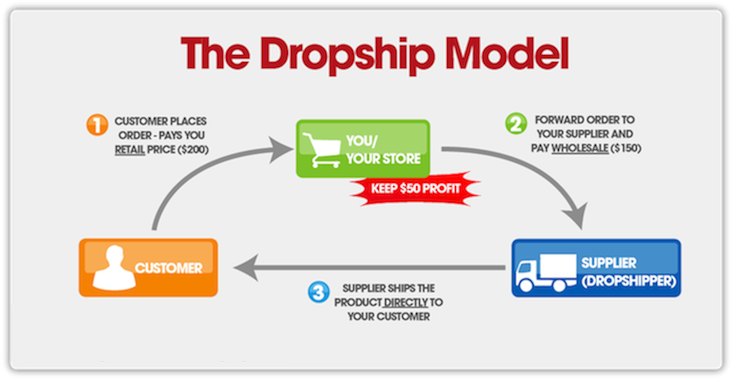Your hair extension business is booming, and customers love your silky straight bundles, curls, and flawless lace closures.
But then—it happens. A customer reaches out with a problem. Maybe they ordered the wrong texture or changed their mind.
What do you do? Panic? No way!
This is where a solid return policy saves the day.
A clear and fair return policy protects both your business and your customers.
It sets expectations, reduces frustration, and even helps build trust with your buyers.
Ready to create one that works for everyone?
Let’s break it down.

What Is A Return Policy?
A return policy is a set of rules that outlines how customers can return or exchange products they’ve purchased from a business, and it’s a fundamental part of any successful Business Plan.
It explains the conditions under which a return is accepted, how refunds or exchanges are handled, and any costs involved, like return shipping fees.
For a hair extension business, a return policy helps manage customer expectations and ensures fair handling of returns due to issues like incorrect orders, product defects, or customer dissatisfaction.
A clear and fair policy protects both the business and the customer, prevents disputes, and builds trust.

Why Do You Need a Return Policy?
You might think, “Can’t I just handle returns case by case?” Nope. That’s a recipe for confusion, frustration, and lost sales.
Think of your return policy as a safety net.
Customers feel more confident buying from you when they know there’s a process in place if something goes wrong. And for you?
It keeps things organized and prevents random refund requests from turning into a headache.
Even if you sell top-quality hair wigs, returns are inevitable.
Sometimes, customers make mistakes when ordering, or they just don’t love the product as much as they thought they would.
A solid return policy ensures those situations don’t turn into unnecessary drama.
To summarize, a return policy:
- Builds trust with customers
- Shows professionalism
- Prevents misunderstandings
- Saves you from endless back-and-forth emails
At some point, someone will want to return an item.
Having a policy in place makes the process smooth and stress-free.

How to Create A Return Policy
The return policy itself shouldn’t be hard to create.
You simply need to outline what you want to have in place for any customer who wants to make a return.
Here’s how to create a clear, fair, and effective return policy that works for both you and your buyers.
Keep It Clear and Easy to Find
If your return policy is buried somewhere in your site’s fine print, customers won’t see it—until there’s a problem.
Then, they’ll be frustrated. The best place for your policy?
A clearly labeled link in your hair website footer, just like major e-commerce brands do.
Easy access means fewer complaints and smoother transactions.
It can also be in:
- Checkout page
- FAQ section
- Product pages

Skip the Legal Mumbo Jumbo
Yes, your return policy is technically a legal document, but it doesn’t have to read like one.
Keep the language simple. Customers shouldn’t need a law degree to understand their rights.
Instead of saying:
“All defective merchandise must be returned in original condition within 30 days of purchase, subject to terms and conditions.”
Try this:
“If there’s an issue with your order(bundles, wigs, extensions, accessories), you have 30 days to return it. Just make sure it’s unused and in the original packaging.”
See? It’s way easier to understand.

Set a Realistic Timeframe
How long should customers have to return an item? Too short, and they might feel rushed.
Too long, and you risk dealing with worn-out, perfect Body Wave Bundles being sent back. The sweet spot? 30 days.
This gives customers enough time to check their orders while keeping your return process manageable.

Define the Condition for Returns
Be clear about what you accept back.
Do you want to resell returned items? If so, they need to be unused, unworn, and in original packaging.
Otherwise, you’ll get back hair that’s been installed, brushed, or even cut.
A good policy looks like this:
- Hair must be in its original packaging
- Hair must be unused (not installed, brushed, or altered)
- Lace frontals and closures must be intact
- Custom orders and final sale items are non-refundable
Laying out these rules upfront avoids awkward conversations later.

Who Pays for Return Shipping?
This is a big one. Will you cover return shipping, or will customers?
There’s no right or wrong answer—it depends on your business model.
Some businesses offer free returns for better customer service, while others require customers to pay for shipping.
If you want to go the extra mile for customer satisfaction, consider offering free return shipping on first-time returns.
Otherwise, clearly state: “Customers are responsible for return shipping costs.” Transparency is key here.

Refunds vs. Store Credit
How will you handle returns in terms of money? There are two main options:
- Refunds: Customers get their money back.
- Store Credit: Customers get credit to use on a future purchase.
Store credit keeps the money in your business and encourages customers to try something else instead of walking away completely.
You can also offer both options and let customers choose. Just be clear in your policy!
Example:
“We offer store credit or a refund for returned items. Refunds are processed using the original payment method. Store credit never expires!”
Prevent Returns Before They Happen
The best way to deal with returns? Stop them before they start.
Many returns happen because customers don’t get what they expect.
Avoid this by giving clear product descriptions, hair length guides, and high-quality photos. Bonus points if you add videos showing different textures!
Also, sometimes, customers think their hair is “bad quality” when they’re just not caring for it properly.
Include care instructions with every order, plus a page on your website with maintenance tips.

Make the Return Process Simple
A confusing return process leads to unhappy customers. Keep it smooth with these steps:
- Step 1: Contact Your Support Team
- Customers send an email or fill out a form to start a return.
- Step 2: Get a Return Authorization
- You approve the return and give them a return shipping address.
- Step 3: Ship the Item Back
- The customer will send the item back following your return guidelines.
- Step 4: Process the Refund or Store Credit
- Once you receive the item, process the refund/store credit within a set timeframe (e.g., 3-5 business days).

Handle Difficult Situations with Grace
Not all returns will be straightforward.
Some customers may try to return used hair or claim a product was defective when it wasn’t.
Stay professional but firm.
- If a return doesn’t meet your policy? Politely decline.
- If a customer insists? Offer store credit instead of a full refund.
- If there is a genuine issue, make things right with a quick refund or replacement.

Final Thoughts
A great return policy isn’t just about protecting your business—it’s about building trust with your customers.
When they see you have a fair and transparent policy, they’ll feel more confident shopping with you.

